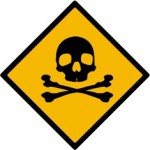The term is tricky because it can be, and often is, confused with “toxics.” Both terms refer to poisons. Generally “toxins” include poisons that are produced by an organism, such as a plant or animal. Examples would include cholera or diptheria that are produced by bacteria, or radon that occurs naturally in the environment. They are also characterised as biologically produced poisons. In contrast, “toxics” generally include poisons generated by synthetic process, such as dioxin that results as by-products of certain industrial processes. Dioxin is not found naturally in the environment.
This distinction is often ignored and when people refer to poisons, they may describe them as toxins or toxics.
In any case, while toxins are dangerous, they also can provide therapeutic results when used in appropriate dosages. For example, botulinum toxin, the most poisonous biological substance known, is used for treatment of various human neuromuscular disorders characterized by involuntary muscle contractions.
Some further ideas to explore on Toxins
Identify five toxins that you come into contact with on a regular basis.
Identify what, if any, protections you need to take to avoid contact with these toxins.
Sources
European Environment Agency, “Toxin.” glossary.eea.europa.eu/terminology/concept_html?term=toxin
National Geographic Style Manual, “toxic, toxin, toxicant.” stylemanual.ngs.org/home/T/toxic-toxin-toxicant
U.S. National Library of Medicine, “Toxins.” www.ncbi.nlm.nih.gov/pubmedhealth/PMH0002985/
The Free Dictionary, “Toxins.” www.thefreedictionary.com/Toxins
EA Johnson, “Clostridial toxins as therapeutic agents: benefits of nature’s most toxic proteins,” Annu Rev Microbiol (1999). www.ncbi.nlm.nih.gov/pubmed/10547701



No comments yet, add your own below